Jerry White
Based in part on a piece published in Dox: Documentary Film Magazine (Copenhagen) #55 (November 2004).
What are the attributes of this brave new cinematic world that we supposedly live in now, all cell-phones and YouTube? I’d propose the following as the key recurring topics in most discourse about cinema’s technological shift: (1) the dissolution of the distinctions between film and video; (2) a freedom to move beyond conventional narrative, a freedom that results from the low cost of new technology; and (3) a newly nomadic globalism, as images are made and distributed more easily than ever. If I may be forgiven a momentary, grouchy digression, I hardly think I am going out on a limb when I say that the work that has come to define this shift is not exactly visionary. I confess that I find viral videos of young Russian men doing deranged ‘street gymnastics’[1] oddly addictive, but if this is the way forward for cinema (and it basically fits all three of the categories I just named), I’m switching back to literature. I take comfort, though, in the thought that this is not really the future, or not the only one, anyway. Pirjo Honkasalo’s 2004 film The 3 Rooms of Melancholia is the future too.
Even though it won a lot of film-festival awards (and had its US premiere at Sundance), the film is not well known.[2] Honkasalo is a Finnish documentarian who has been working for several decades now, and while she’s well-respected in European documentary circles, her films don’t circulate very widely outside of television and festivals. She is, in many ways, a seminally European kind of filmmaker; she has worked steadily for many years, has maintained a fair bit of independence, and has been able, every once in a while, to make a major contribution that moves the art forward. The 3 Rooms of Melancholia is such a contribution.
It’s not so much that Honkasalo ignores differences between film and video as she moves flexibly between the two media. The first of her ‘rooms’ is the Russian military academy on Kronstadt, which is sometimes known as the ‘fortress island’ (it’s in the Gulf of Finland), where young boys learn, in essence, to be Czarist soldiers. The film’s press notes state that the military school there was founded in 1995, and ‘represents an attempt to revive Czarist military traditions, and is under President Putin’s special protection’. This sequence is shot on 35mm, and well it should be. Most of the first room’s most memorable images are rendered in a late-in-the-day, mid-winter light, giving the whole place a richly sad sense. Indeed, there is a distance to a lot of these images that the 35mm makes even more vivid; I’m talking here of close-ups of a boy’s face as he sits on a bus, but I’m also talking of extreme long shots of the ‘fortress island’, shot from the Russian mainland. This section is a symphony in snow and slush, and visualises Kronstadt as a place that is cold and unwelcoming; the quality of light is key to that sense. These images are sharp and clear, but they have the quality of twilight to them.
The images of the ‘second room’ are shot on video, and these images are quite lovely; that is to say, they look as they should. This room is Grozny, capital of Chechnya, and if Kronstadt was a symphony of slush, this is a study in mud. We switch to black and white here, a choice that is more complex than it may at first appear. A shot where Russian tanks come in and out of the picture, framed within the frame of the car windshield Honkasalo is shooting out of, is a kinetic, deep and visually complex image. A minute or so later, she has a series of images taken inside of a car approaching a checkpoint, and she manages to make the enclosed space both intimate (through the use of well-framed close-ups) and deep (a shot from the back seat that has headscarf-clad women in both the back and front seats and a muddy road on another, farther plane is quite striking). These are images of despair and of deprivation, and the use of a visually deprived format seems appropriate. Thus this change to black and white, and this shift to squalor, is a more complex matter than a simple ‘impoverished region, impoverished image’ sort of strategy. Indeed, the aesthetic is not impoverished; Honkasalo’s compositional sensibilities are quite intact. It’s just that a grainy, even slightly dirty, image is grimly appropriate for fleeting images of an annihilated landscape. That graininess, that dirtiness, is highly composed. The lightweight video camera allows Honkasalo to ride in a car through stop-checks in a way that would indeed be difficult with a 35mm, thus a new sense of flexibility inherent to portable and lower-resolution camera technology is unquestionably present. What is also present, though, is the visual rigour that she brought to the 35mm sections.
The flexibility, both in terms of structural eccentricity and documentary aesthetics, that low-cost digitial video makes possible, is also present in the third room, Ingushetia. This is the Russian republic that neighbours Chechnya and is the site of a large refugee camp (the titles tell us that we are four miles from the Chechen border). Here, though, Honkasalo shows boys not doing drills in sterile hallways, but wandering through empty fields. Indeed, Ingushetia emerges as a kind of mirror image of Kronstadt. The authority figure is the mother-like Hadizhat Gataeva, who looks after dozens of orphans, whereas the school in Kronstadt is ruled over by stern, male officers; Ingushetia is green where Kronstadt is icy, foggy where Kronstadt always seems a bit under-lit, still engaged in traditional Muslim worship where Kronstadt clings to military ritual. Images of Islamic and military ritual are linked to Honkasalo’s precise, almost classical framing, but the contrast between the two is sharply evident. Ingushetia is, in short, a different country, but one that Honkasalo shows us to be unmistakably connected to Russia; we are somewhere else, and yet somehow not.
This sense of uncertain internationalism is not a bad metaphor for globalization as a whole, a phenomenon that relies on cultivating a feeling of cultural unfamiliarity and yet is always unavoidably tied to the culture of a very few imperial powers. Globalisation hasn’t yet done much for Pirjo Honkasalo’s visibility, or that of the great Chadian filmmaker Mahmet-Saleh Haroun, or that of the indispensible young Québécoise Catherine Martin; it’s done a lot for the career of Danny Boyle, someone who, ahem, didn’t really need the help. Portable, flexible image technology seems like it can transcend borders; you can film anywhere, and then upload these images for viewing anywhere.
But of course it is not that simple. Honkasalo knows that well, and is using an aesthetic that shifts between film and video, and using the portability of video to show us that nomadism is not only a herald of a brave new world of free movement and cultural understanding, but a way of existence that makes it clearer than ever how much of this globalised world is defined by military roadblocks on muddy non-roads, or by reborn nationalism that saves its most richly realised ritualism for adolescent boys sent to a frozen island. The differences between these two spaces is explicit, but it is their juxtaposition that makes their interconnectedness just as clear. Putting film alongside video, like putting Czarist imperialist ritual alongside the daily life of the imperial possessions, is part of the same philosophy of internationalism, the same ethic. It is easier than ever to visualise cultures that are very different from one another, just as it’s more possible than ever to visualise different formats and aesthetic possibilities; it’s also more urgent than ever to understand that the interconnectedness between such different forms illuminates both the continuing relevance of humanist idealism about shared experiences and the reality of a world now defined by insidious new forms of neo-imperialism.
In an interview published in DOX #39 (February 2002), Honkasalo argued against the use of digital video. While she acknowledged that it opens up access and reduces pretences of professionalism among filmmakers, she also warned that “the danger we face with all the digital is that we forget that film is also an art of the image.” The 3 Rooms of Melancholia shows us that this does not have to come to pass, that the fundamentally image-based quality of the cinema can be retained by someone shooting in video, provided that she knows what sort of images video can produce, and what those images can express. Cinema is now undergoing a complete and irreparable transformation. Barriers between film and video are disintegrating; thus, the choice to shoot the island fortress on 35mm and Chechnya on black and white video feels like a real choice, and can, at the best of times, be deeply expressive. Lightweight technology does make it easier to move about the world freely, like a drifter; thus a film made by a Finn moving between Russia, Chechnya and Ingushetia is a lot easier to realise now, and that’s a good thing given how urgent it is that the changing nature of imperialism be submitted to the rigorous analysis of committed filmmakers. And lightweight technology does make it easier to slip free of convention, given that it lowers the financial stakes so drastically, and that allows ambitious artists like Honkasalo to link their political commitments to equally intense (and philosophically connected) aesthetic commitments. The 3 Rooms of Melancholia is truly a film for the digital age of cinema; Honkasalo understands the possibilities of that age, and understands just how hard you have to work to really live up to those possibilities.
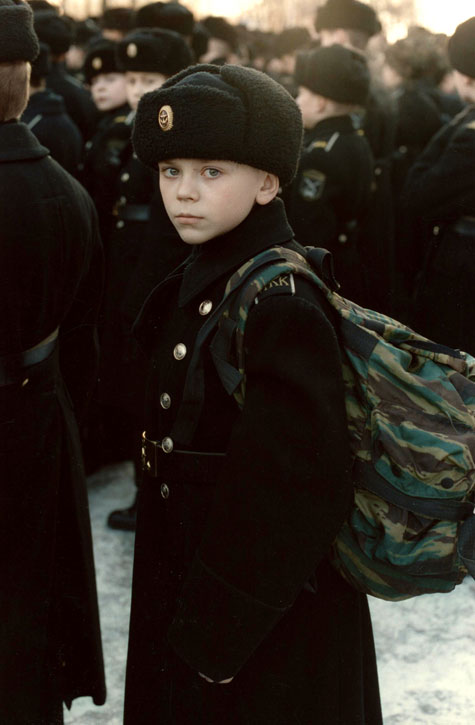
Notes
[1] http://ca.youtube.com/watch?v=b1EelXhRGwc, if you must know.
[2] Facets Multimedia reports it as being soon to be released on video. At the moment it is distributed by Icarus Films (icarusfilms.com).

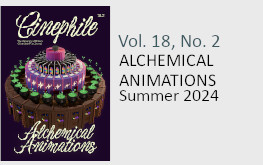
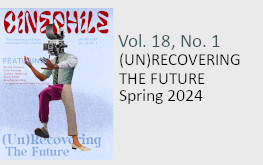
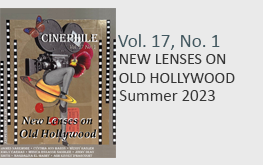
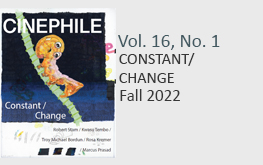
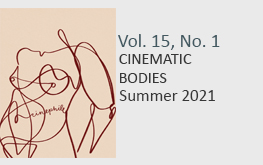
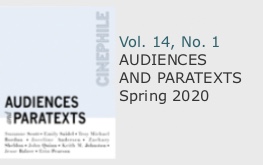
Critical and historical study of European writers and theorists of socialism who set the stage for the Russian Revolution of 1917, by Edmund Wilson. It was published in book form in 1940 although much of the material had previously appeared in The New Republic. The work discusses European socialism, anarchism, and various theories of revolution from their origins to their implementation. It presents ideas and writings of political theorists representing all aspects of socialist, anarchist, and what would later be known as communist thought, among them Jules Michelet, Henri de Saint-Simon, Robert Owen, Mikhail Bakunin, Anatole France, Karl Marx, Friedrich Engels, Leon Trotsky, and Vladimir Ilich Lenin–who arrived at Petrograd’s (St. Petersburg’s) Finland Station in 1917 to lead the Bolshevik revolution
After checking out a handful of the blog articles
on your website, I really like your technique of writing a blog.
I book marked it to my bookmark website list and will be checking back in the near future.
Please visit my web site too and tell me what you think.